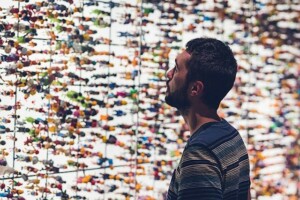Ever since he was a child, Simon Tonge has never been in any doubt about his career path.
“Every decision I’ve made has been towards one day becoming a zoo director, ” he says.
The ‘one day’ arrived in 2000 when he became the Executive Director of Paignton Zoo in Devon, UK, founded in 1923 by eccentric millionaire, Herbert Whitley. It had been saved from closure in the 1990s when the Board sold off some land, raised funds that were matched by the EU, and reinvented itself for the modern visitor.
“It’s been a success ever since, ” says Tonge.
He spoke to Blooloop about the Whitley Wildlife Conservation Trust, the fall-out from Brexit and a brand new Savannah exhibit being created at Paignton Zoo.
.jpg) An Obsession with Animals
An Obsession with Animals
“Pretty much since I was sentient, I have only ever been interested in animals, ” he says.
His self-confessed obsession echoes that of famous naturalist and author, Gerald Durrell – both men spent part of their childhood abroad fascinated by the exotic wildlife they encountered. But, it wasn’t to Corfu but to Africa that Tonge’s family moved when he was five, and he grew up in Zambia and Malawi playing in the bush.
“We’d go out and see how many lizards we could find, and how many frogs and toads and God knows what. We were completely fearless. We used to stick our hands into holes without knowing what was in them: there is a God that looks after small children, because we only ever once found a snake.
“I’m sure living in Africa didn’t hurt, but I think even if that hadn’t happened I would have been obsessed with animals anyway.”
After completing a zoology degree at Bristol University, Tonge launched his career at Durrell’s famous Jersey Zoo in the Channel Islands.
He worked in the reptile department for eleven years before taking two years out to train as an accountant, having decided it was time to learn more about the financial side of the business.
“The things I learned in those two years are, I would say, essential for anybody who has aspirations to be a senior manager.”
With his career firmly on track, he worked out that there were likely to be several vacancies for zoo directors around the year 2000 and was determined to position himself as a likely candidate.
“The two years as an accountant helped, then I worked at London Zoo as the Senior Curator in charge of the animal department and all the keepers, which was a good background for my current position as Director of the Whitley Wildlife Conservation Trust, and all its zoos.
“That’s how it happened.”
 The Whitley Wildlife Conservation Trust
The Whitley Wildlife Conservation Trust
The Whitley Wildlife Trust (now the Whitley Wildlife Conservation Trust) was endowed when Herbert Whitley died in 1955.
During the following 40 years, the zoo continued to develop sporadically but without much commercial success until, in the early 1990s, the Board realised that without a source of funds to redevelop it, the zoo would have to close.
The decision was made to sell off some land and match-fund an EU grant, which resulted in a fighting fund in the region of £6 million – enough to rebuild, redesign and reinvent the zoo from a marketing and branding perspective.
“The rest is history: it’s been a success ever since, ” he says.
“I always think this that is a really good example of the good use of public money, not to create a new visitor attraction, but to insert the means into an old one that was struggling but had potential.”
The First Zoo Founded for Educational Purposes
Paignton may not be the earliest zoo still in existence (ZSL London Zoo can trace its roots back to 1826) but, says Tonge:
“Our boast for Paignton Zoo is that it is the first zoo, certainly in this country and arguably in the world, founded for educational purposes.
“Herbert strongly argued that his zoo was a place of education, not just of entertainment, and he actually fought that principle with the local council, and refused to pay an entertainment tax that was around at the time.”
<
Over the years, the Trust has grown significantly and now owns and operates Paignton Zoo, Newquay Zoo in Cornwall, and Living Coasts in Torquay. There are also two nature reserves in this country, and field conservation programmes both in the UK and overseas in Zimbabwe, Nigeria, Indonesia, Sulawesi and Vietnam.
“It is a complex entity of which Paignton Zoo is the single largest part, ” says Tonge. “The operating surpluses from the zoos are what drives this organisation: the zoos pay for the conservation work we do here and overseas, so there is a direct link that way and I like it to be that way: I think it’s appropriate.”
So, do zoos still exist primarily to breed rare animals in enclosures and then release them into the wild or has their role evolved?
“When I began my career back in 1980 I believed that’s what zoos were for, ” he says.
“Actually, it’s not. It’s an important part of what we do, but quite a small one. We’ve done it with things like cirl buntings in Devon, golden lion tamarinds in Brazil, dormice in this country: various species.
“But, the primary reason for having an animal collection is to inspire and educate people. But in order to maintain an animal collection to do that, you have to manage them in exactly the same way as you would do if they were an endangered species that you were managing for conservation purposes.”
 World-Leading Research
World-Leading Research
Paignton has one of the best zoo-based research departments in the world:
“They are very thoughtful, very clever people, and we do a lot of work looking at our animal collection and doing research not just on how to keep the animals better, but about what the animals do, what they think and why they behave the way they do. We’ve done a lot of work, for example, on nutrition: some of the stuff that we do on primate nutrition has been world-leading. I’m very proud of that, and want us to go on doing that sort of thing.”
All animal species are managed on a collaborative basis with other European zoos.
“We do it on a European level because there are not enough zoos in this country alone to maintain populations of larger animals, so we have to work with our colleagues across Europe. Genetic theory says that if you need to maintain a population of rhinos for a hundred years, you need about five hundred animals, and so 250 zoos with a pair each can do that.
“But, you need to then coordinate that work, you need to have people who understand how to manage populations, what the genetics of populations look like or should look like, and then apply that to the actual logistics of managing populations.
“That’s really complicated stuff, and we employ, as do many other zoos, some really clever pointy-headed people who can manage these populations and really understand the genetic theory underlying them, so a lot of science goes into it.
“Animals are moved around between zoos; there’s no ownership. For example, we have Asiatic lion cubs here at the moment. Our Asiatic lions are managed very closely across Europe, and we got a breeding recommendation for our female; she’s had her first cubs. What happens to those cubs will depend entirely on what the stud book keeper and the species coordinator say is appropriate. If we’re lucky our female will get another breeding recommendation in a year or two’s time, if not, then she won’t breed again because she has already fulfilled her genetic commitments to the population.
“We try and manage populations to hit certain target population levels.”
The Trouble With Brexit
Brexit has thrown up all kinds of uncertainties as to how this crucial movement of breeding stock will be managed in the future.

“The whole Brexit thing is making us nervous, ” says Tonge. “At the moment, of course, we’re in the same quarantine zone, being a part of the EU, so it’s relatively easy to move animals around within the EU. But it’s bloody difficult to move animals from outside the EU into it, and vice versa. How is that going to work? How are we going to maintain our populations of animals?”
Like all major zoos, Paignton puts both money and expertise into conservation projects in this country and overseas. Many zoos have field conservation specialists who advise or participate in breeding programmes: there are two people in Paignton Zoo’s conservation research department whose job it is to coordinate overseas work.
“Next week I’m meeting up with some counterparts from Marwell Zoo in Hampshire that are coming down here and we’re going to be talking about one of the projects we both support in Zimbabwe. It’s a very networked system. I know all the zoo directors in this country, I know most of the European ones, and I know many of the American, Australian and South African zoo directors.
“We all meet up periodically to talk about life, the universe and everything – and how we can make our zoos better. One of the things we do worry about a lot is standards of husbandry, standards of welfare, in our zoos. I very much defy anybody to come to Paignton Zoo and point to me a genuine animal welfare problem with any of our animals. They are in great shape psychologically and physically.
“A very famous primatologist, Professor John Oates, came here about a month ago. He has worked on primates in the field for fifty years and he said our primates were the best looking he’s ever seen in a zoo anywhere. That’s because we’ve got the diet right, we’ve got the husbandry right and we’ve got the social systems right.
“I’m proud of that.”
David Attenborough and Paignton’s Orang-utans

Both in 2015 and earlier this year, David Attenborough visited Paignton Zoo to film the orang-utans which live in naturalistic enclosures that make an ideal backdrop for some of the scenes to camera.
“We try and give our animals naturalistic enclosures because they like it and our visitors like it. But the challenge, of course, is that if you give them naturalistic enclosures, they behave in naturalistic ways and sometimes they hide, or if you’re a lion you just fall asleep behind a log and nobody can see you. And, if you’re a lion, you can sleep for 22 hours at a time…
“I read a definition of leadership once as ‘the resolution of dilemmas’, and that is exactly what I do. I try and resolve the dilemmas of how you give people a fantastic day out without compromising on animal welfare. Because I have a very strong animal background, I think I’m in a good place to judge those compromises.
“I think most people would say we get the result pretty much right.
“What I’d like is for people to come, have a fantastic day out and not feel any sort of guilt trip about going to a zoo and looking at animals in captivity. They don’t need to feel that: they should be assured that the animals are in great shape here – we do think very carefully about their welfare.
“An orang-utan, even when it’s happy, has a face that can look like a smacked bum. It’s not miserable – it’s an orang. That’s what they look like.”
Living Coasts

The current strategic plan for Paignton Zoo stretches to 2020.
“We do look and behave like a business in that sense, although the whole organisation is charitable. Charities can’t trade, but are allowed to own subsidiaries that do, so we have a trading company whose job it is to sell stuff, and that trading company is what makes the difference to us financially. The zoos more or less break even, might make a small surplus in a good year, but our annual surplus comes from trading.
“So, it’s critically important to us financially, but it’s also important because it’s a really good way of getting across conservation and environmental messages if you can attach that to the way you do your trading. We’re not fully there yet, but we’ve been working towards that very strongly over the last two years.”
“We have a process we call collection planning, and we look at the conservation lists, the species in need of conservation management, and we look at what we need to maintain a broad and balanced animal collection for our visitors. We also look at our facilities, at what we can provide here and what we can’t.
“A good example is the fact that, in 2003, we opened the Living Coasts exhibit in Torquay. We did that for two reasons. One is that we didn’t want anybody else running an animal attraction in Torbay. That was the vulgar commercial motive. The second, and more important one for us, was that we thought we could do things on the Living Coasts site that we would never be able to do here at Paignton. That’s because the Living Coasts site was right next to the sea. We had access to seawater and therefore we could make penguin exhibits and keep sea birds and sea mammals in a much better way than we would be able to do on the Paignton Zoo site.
“Our view is that if we can’t do it well, then we’re not going to do it at all.”
The New ‘Savannah’ Exhibit

The zoo is currently working on the creation of a new exhibit, Savannah.
“At the top, eastern end of the zoo the site slopes gently upwards into a bowl. It’s been developed over the years and has a number of enclosures, all of which contain African animals – zebras, ostriches, giraffes, but there are lots of fence lines, lots of barriers across, there’s a big roadway that runs right through the middle of it.
“We think there’s an opportunity there to make a facsimile of an African savannah where we can get more species in together and create what looks like a single exhibit.”
The plan is to build new animal housing – for which planning permission has been obtained – away from the main visitor flow, creating space in the centre of the zoo for the development of the Savannah exhibit, using artificial rockwork, landscaping and planting. There will be some themed animal exhibits including meercats, aardvarks and aviaries, one with vultures, and one with birds trained to come to visitors for one on one contact.
Savannah has planning permission, and the zoo is working with Natural England and its own specialists on issues such as tree preservation orders and flood mitigation issues.
 “Our main constraint is the finance. We need to be absolutely sure how much it’s going to cost before we start, and, of course, there are now uncertainties that didn’t exist before Brexit. We’ll just have to see how it pans out.
“Our main constraint is the finance. We need to be absolutely sure how much it’s going to cost before we start, and, of course, there are now uncertainties that didn’t exist before Brexit. We’ll just have to see how it pans out.
Using Money Judiciously
“Chester Zoo have just opened an exhibit this year which has cost them £40 million; London Zoo has opened one that cost them £5 and a half million. We are not able to generate that sort of surplus, so we have to use our money much more judiciously and try and keep people thinking that this looks like a £40 million site even if it actually isn’t. That’s our challenge, and we’re up for it.”
“At the moment with Savannah we’re working on the detailed design of the public areas, where the rockwork goes, how it will look. We’ve been working with Kay Elliott Architects, a Torquay-based firm, who designed Living Coasts for us; they did Monkey Heights for us, and Crocodile Swamp, and we’ve been working with them on the landscaping for this.
“It’s a slightly odd development in that it’s not one huge building. There is a lot of landscaping, some specialist rockwork, some animal holding facilities, a lot of planting. We’ve got the skills and the expertise to do some of this in-house. What we’ll probably do rather than using a main contractor is to let out packages, using a contractor for the two main animal holding areas.
“If we can get our costings right, and get a bit of confidence for the future, we could start some of the work this winter, and, weather permitting, be looking at an opening in – perhaps – summer 2018. Don’t hold me to that.”
Opening date aside, Tonge sees Savannah as an opportunity to showcase the vital conservation projects overseas:
“We can use it to tell proper stories about conservation issues in Africa and relate them to conservation issues in this country and to highlight the work we do.
“We can start to tell the story about the project that we support in Africa, in the Matopos hills in Zimbabwe, an extraordinarily beautiful area of the world which has the last surviving rhinos in Western Zimbabwe. We put money every year into supporting the trust that supports that national park, and we want to be able to link that exhibit with our field programme, and tell its story.
“Zimbabwe is a crazy place, with an economy that’s been deliberately destroyed by its own government for racial reasons, and it’s just crazy and immoral, but in the middle of it all there are these last remaining populations of some of the rarest animals on Earth, so we feel a moral obligation to try and do something to help.
“The Savannah exhibit is a way of doing that.”
A Zoo’s Role is to Educate and Inspire
“In every sense, I think Paignton is a modern zoo, ” says Tonge. “It’s a beautiful wooded site, it’s got a lot of lakes, and we’ve also got a bit of height and aspect. We have interesting vistas and plenty of places where people can be surrounded by greenery and relax; we don’t try to be a high-intensity site, although if you go to our restaurant on a busy day like today then it’s extremely busy – but the site is big enough for people to get away from each other, to relax, and appreciate nature.
“That’s why we have the zoos: we want to educate and inspire people; we want them to come to love animals and plants in the same way that we do.”
Paignton Zoo is a registered botanical garden as well as a zoological one, with an established and important plant collection.
“That’s another reason for people to come to visit. Of course, some people prefer other styles of zoo, but a lot of people really like our style here, and the feel. And I do, too.
“If I have a bad day in the office, I can go and have a walk round the zoo and I feel much better as a result.”
.jpg)
Images: Paignton Zoo

















